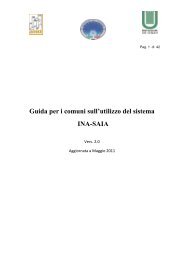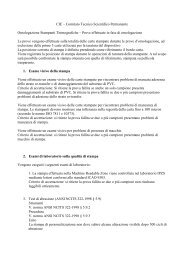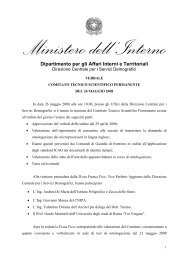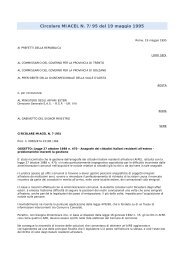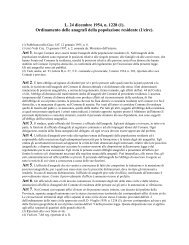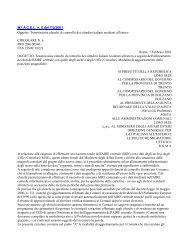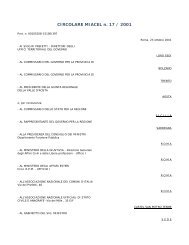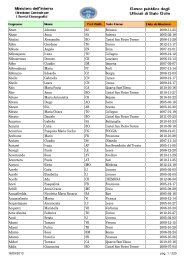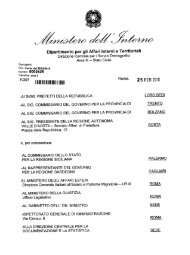C.I.E – Carta di Identità Elettronica Functional Specification Version 2.0
CIE - Functional Specification v 2.0
CIE - Functional Specification v 2.0
- No tags were found...
You also want an ePaper? Increase the reach of your titles
YUMPU automatically turns print PDFs into web optimized ePapers that Google loves.
Only the following FCI object is mandatory in case of DF or EF selection, while all other tags in theFCI can be proprietary implementations and should be ignored by C.I.E. applications.T L V80h or 81h 02 File Size12.4 READ BINARYCLA INS P1 P2 P30X B0 Offset (Hi-byte) Offset (Lo-byte) LE=Numer of bytes to readTable 37: READ BINARY commandThe Read Binary command reads part or all the data in a transparent EF. This command isprocessed on the currently selected EF.The offset value in the parameters P1 and P2 sets the starting point of the byte string to read withinthe file. The offset is calculated from the start of the file (0000 is the first position, 0001 the secondand so on).The maximum number of bytes that can be read in one command can’t exceed 256. If more bytesare required, then the amount must be spread up onto multiple read binary commands.Selection by SFI is not required. The bit P1.7 MUST be set to zero by the terminal.If LE=00 then all available bytes in the file shall be returned by the card up to the end of the file,and up to 256 bytes.Note:With old implementations of CIE one of the following situations may occur:1) Le = 00h: if FileLength>256 then an error is returned, otherwise the card returns all availabledata, up to the end of the file2) Le !=00h• Le > FileLength-P1P2: the card can return all bytes until the end of the file or an error 6Cxxwith xx = FileLength-P1P2.• Le





